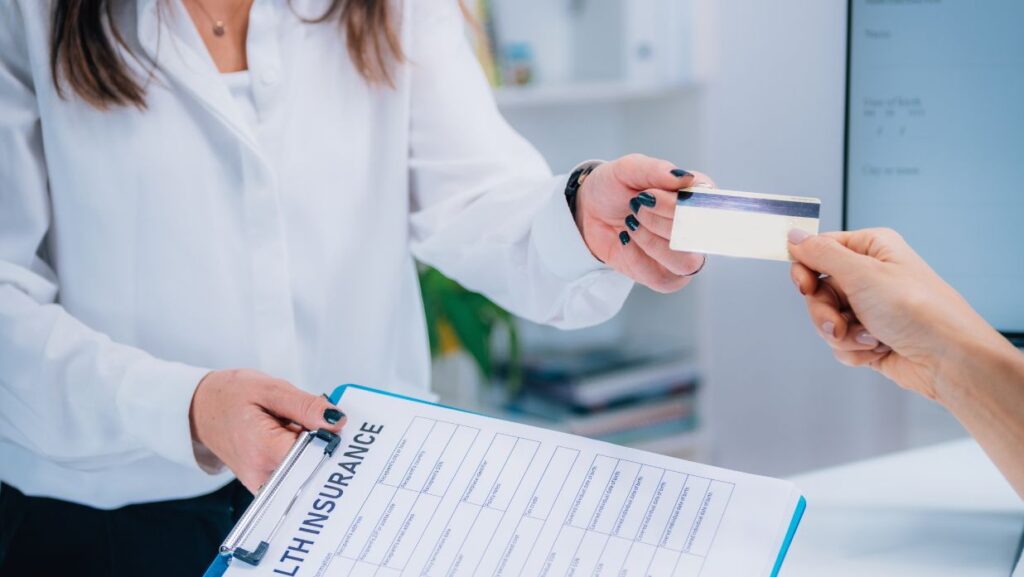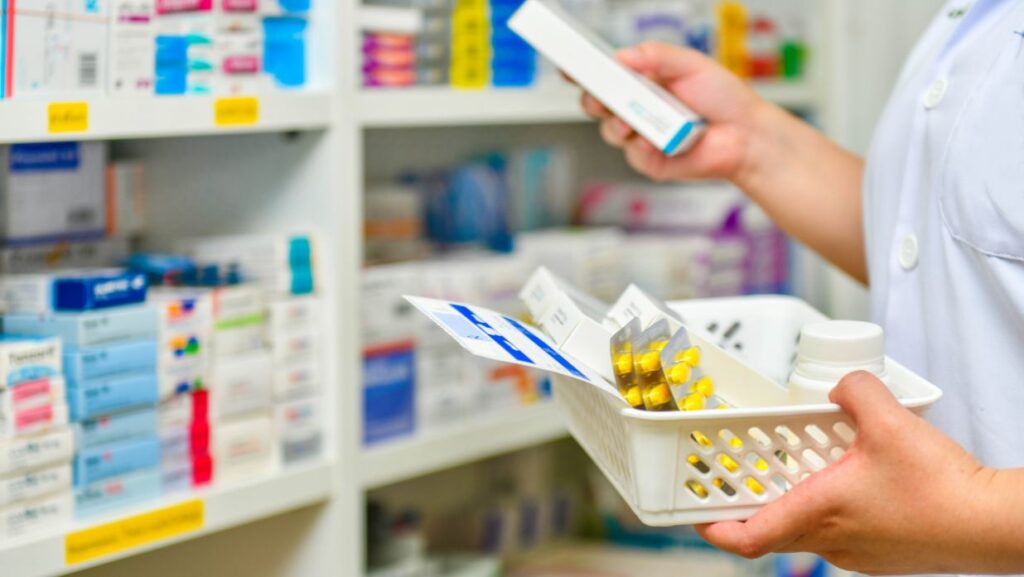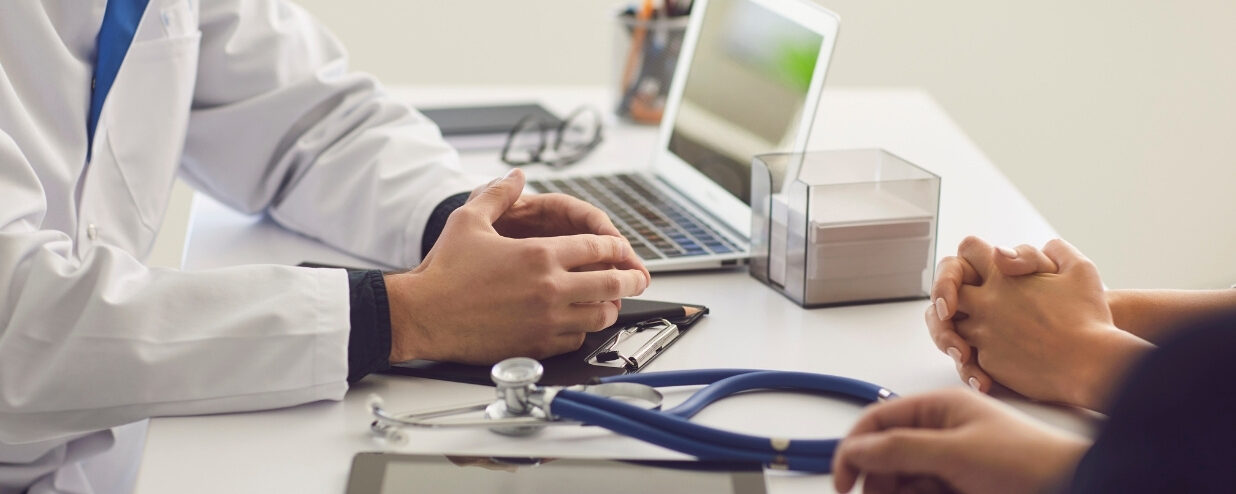Whether you’re a short-term visitor in Japan under a Working Holiday visa or a tourist seeking to visit Japan, getting medical treatment if you have no health insurance in Japan can be scary. After all, getting injured or catching a stomach bug and fever is the last thing we want while traveling. What happens when you need help and health care in a country with a different healthcare system, language, and culture?
Thankfully, while Japan is a country with a reputation for being expensive, it’s certainly not true when it comes to healthcare. In Japan, you can get high-quality medical care at a reasonable price (maybe even a fraction of the cost of what you would pay in some developed countries like the USA).
From advice on hospitals and clinics with English-speaking staff to how to get a healthcare reimbursement, in this blog post, we’ll provide insight into affordable options for those looking for medical care in Japan.
Understanding Japan’s Healthcare System
Japan has a universal healthcare system, meaning that everyone living in the country is required to have health insurance. This system helps keep medical costs affordable for all residents.
If you’re living in Japan on a long-term visa, you’re typically enrolled in one of two types of insurance:
- National Health Insurance (国民健康保険 / Kokumin Kenkou Hoken): For students, freelancers, part-timers, or the unemployed.
- Employee Health Insurance (社会保険 / Shakai Hoken): For full-time workers through their employer.
Even if you recently quit your job and became unemployed, you’re still expected to enroll in National Health Insurance through your local city office. With either insurance type, you usually only pay 30% of your medical bill, while the remaining 70% is covered by the insurance. There is also a cap for that to protect you from excessive expenses.
If you’re visiting Japan on a short-term visa, like a tourist visa, the situation is different. Tourists are not eligible for Japan’s national health insurance system. Instead, most visitors are advised to get travel insurance before arriving.
Travel insurance is not directly accepted by hospitals or clinics in Japan. You’ll need to pay 100% of the medical costs upfront — including consultation, tests, and medicine. Afterward, you can submit the receipts, medical reports, and claim forms to your travel insurance provider for reimbursement. Keep in mind that hospitals and clinics do not bill travel insurance providers directly.
Can you go to the hospital or clinic in Japan without health insurance?

Yes, you can go to a hospital or clinic in Japan without health insurance, especially if it is a medical emergency. However, there are a few important things to keep in mind.
Firstly, without national health insurance or travel insurance, you will have to pay 100% of the medical fees upfront. Unlike insured patients who pay only about 30%, uninsured patients pay the full cost of consultations, tests, treatments, and medications. Some hospitals or clinics may require payment before treatment or may be hesitant to accept uninsured patients, so it’s good to call ahead if possible.
The good news is that Japan’s public healthcare system is excellent. Emergency hospitals cannot refuse treatment regardless of insurance status, but you will still be billed afterward.
How to Get Medical Care Without Health Insurance in Japan
Getting medical care in Japan is actually pretty easy, even if you don’t have health insurance. Here are a few options for getting the care you need:
1. Go to a clinic in Japan
You can still visit any clinic or hospital without insurance. Just tell the receptionist that you don’t have insurance. If you find yourself needing emergency care, you should call a hospital before going because each place has its own way of operating its ER.
At some places, walk-ins are allowed, while other places will not let you in if you haven’t called in advance. During normal operating hours, not all hospitals will take you in without a referral. That’s why clinics are your best bet. However, you can Google the places and see what their policy is.
You could also try visiting a clinic or hospital that offers “international patient services.” These places are typically located near tourist areas. They will have staff who speak English and are familiar with foreign visitors’ needs. The downside of this option is that it can be more expensive than going to a regular clinic or hospital. But if you don’t have insurance and don’t speak Japanese, this might be your best bet.
When you walk into the place of your choice, tell the receptionist that you don’t have health insurance and that you would like to see a doctor. The receptionist will then give you a form to fill out. If you don’t speak Japanese, ask for an English version of the form, ask for assistance with Japanese, or use the camera on Google Translate to translate the form on the spot.
2. See your doctor
After turning in the form, you’ll wait to be seen by the doctor. You may have to explain your symptoms, but you can write them out in a translation app on your phone and hold it up to the doctor. They will understand.
The doctor will prescribe whatever medication and service they feel you need. If you need any tests done (blood work, X-rays, etc.), the doctor will order them and tell you when to come back for the results. The results may even be ready on the same day.
3. Pay your medical bills
When you’re finished with your appointment, go to the cashier and pay your bill. The amount you’ll pay depends on the type of consultation and any tests or procedures that were done. Also, you may receive your medicine from the same place or be instructed to go to a nearby pharmacy to fill your prescription.
To give you some idea of the expenses you may be looking at, here are some prices I paid out of pocket when I went to clinics recently without insurance: 13,000 yen (COVID test, flu test and consultation with the doctor); 15,000 yen (chest X-ray and consultation with a doctor); 46,000 yen (bloodwork, CT scan, consultation with a doctor and medicine); 5,000 yen (a prescription medicine).
4. Keep Your Medical Care Receipts in Japan
They’ll give you a receipt which you can use to apply for a refund either in your home country or here, in Japan, if you’re a resident.
Alternatively, you can find a free or low-cost clinic. There are many NGOs and other organizations that offer free or low-cost medical care to residents of Japan, regardless of their income or employment status. These clinics typically offer basic primary care services such as check-ups, vaccinations, and screenings. To find a clinic near you, try searching online or asking at the local city hall/municipal office— shiyakusho in Japanese — or community center.
A quick word of advice for those who do have insurance in Japan: Use the Japan National Health Insurance system by ensuring you present your health insurance card if you have one! If you live in Japan and are employed by a Japanese company, you are required to enroll in the national health insurance program. This program covers 70% of your medical expenses (80% if you are over 65 years old).
Even if you don’t have insurance, you can still use this system by paying the monthly premium plus a 20% co-pay for each visit. The premium varies depending on where you live in Japan, but it is usually around 5,000 yen per month (about $50). To get this type of independent health insurance, you’ll need to visit your local municipal office and go through the sign-up process. Usually, you can be enrolled and receive your health insurance card in one visit on the same day.
How to Get a Refund for Your Medical Expenses in Japan

While you can get medical care in Japan without health insurance, it’s even better if you have travel insurance. This type of insurance is offered for tourists, and you can buy it through your local insurance provider, insurance companies, or credit card companies.
Common health insurance term
If you do have health insurance in Japan (not the national health insurance we talked about) and you’re a tourist, there’s a good chance it will not cover all of your medical expenses while you’re visiting Japan. That’s because most foreign insurance companies only provide “secondary coverage” for policyholders who are living abroad. This means that they will only reimburse expenses after your primary insurer (i.e., your Japanese health insurance company) has paid its share.
“Third-party billing” is one option if you’re a tourist. This involves having your doctor or hospital send the bill directly to your home country’s embassy or consulate in Japan. They will then forward the bill to your insurance company for reimbursement.
“Direct billing” is a second option for tourists that may be available at some clinics and hospitals. With this method, the provider will bill your insurance company directly and receive payment from them directly—leaving you off the hook entirely!
“Reimbursement” is yet another possibility for tourists and for those living in Japan, although it may not be available at all clinics and hospitals. With this method, you pay the bill upfront and then get reimbursed later on down the road. For tourists, that means submitting the receipt to your insurance company after you’ve returned home. It’s a bit different for foreigners living in Japan.
Steps to claiming your medical expenses in Japan with health insurance
In general, here are the steps to claim your medical expenses in Japan through travel insurance:
- Pay the full amount upfront at the clinic or hospital.
- Ask for official documents before leaving:
- 領収書 (Ryoushuusho) – Official payment receipt
- 診断書 (Shindansho) – Doctor’s report or diagnosis (may cost extra)
- 明細書 (Meisaisho) – Itemized receipt (breakdown of charges)
- Keep all documents, prescriptions, and payment proof (credit card/bank slip).
- Contact your travel insurance provider for claim instructions.
- Submit your claim form with all documents attached (usually online or via email/post).
Steps to claiming your medical expenses in Japan as a resident
For residents of Japan, there is generally a one-month time limit from the time you visit a clinic until the time you can claim your reimbursement. A scenario for having to be reimbursed would be if you somehow find yourself sick and temporarily without insurance (such as between two jobs), but you knew you’d be receiving your new healthcare card soon.
Upon receiving your healthcare card, you would take that and your receipt(s) back to the clinics or hospitals where you sought treatment. They would then process your reimbursement and give you back 70% of what you paid. In most cases, they will give it back to you in cash on the same day and within a few minutes!
Awesome! If you paid by credit or debit card, some places will refund it back to the card instead of giving you cash.
As I mentioned in an earlier section of this article, if you won’t be getting employee health insurance anytime soon, you can always go to your municipal office and get enrolled in individual healthcare, get a health insurance card the same day, and get reimbursed most of what you paid out of pocket.
Alternatives to Going to a Clinic in Japan When You Have No Insurance

While health should be your number one priority if you are visiting a country, there are some options if you only have mild symptoms.
1. Drugstore
If your symptoms feel manageable, consider visiting a drugstore first. Drugstores in Japan might look a bit different from those in your home country — many also sell groceries and daily necessities — but their main role is still to provide over-the-counter medicine. Most drugstores are also connected to a pharmacy, which requires a prescription to issue specific medications. However, if you don’t have a prescription, we recommend speaking directly with the staff at the drugstore.
Staff are usually trained to recognize common illnesses such as hay fever, the flu, or fever. If you don’t speak Japanese and already have a specific medicine in mind, you can ask them:
すみません。風邪薬はありますか?
Sumimasen. Kaze gusuri wa arimasuka?
Excuse me. Do you have cold medicine?
2. Charity Clinics and NGOs
Some cities have free or low-cost clinics run by NGOs or local governments for foreigners or uninsured people. These are usually for basic care or specific diseases and may have language support.
For example, AMDA International Medical Information Center provides free medical advice and interpretation support over the phone. This can help you in finding clinics and assist you when you are uninsured.
3. Public health centers
Public health centers (保健所, hokenjo) can offer basic health consultations, advice, and sometimes vaccinations or screenings at low or no cost. They are a good place to start for non-urgent issues or guidance. However, depending on areas, you might be need to be able to speak Japanese.
English-speaking Medical Hotline in Japan
Besides the Fever Hotline, these numbers aren’t just for if you need medical attention, but also for a broad range of inquiries or concerns you might have. They can provide assistance in English.
1. Tokyo Metropolitan Health and Medical Information Center Himawari (03-5285-8181)
Languages: English, Chinese, Korean, Spanish, and Thai.
2. Saitama Prefecture (048-833-3296)
Languages: English, Chinese, Spanish, Portuguese, Korean, Tagalog, Thai, Vietnamese, Indonesian, and Nepalese.
3. Mie Prefecture (080-3300-8077)
Languages: English, Portuguese, Spanish, Tagalog, Chinese, Korean, Vietnamese, Nepalese, Indonesian, and Thai.
4. Gunma Prefecture (027-289-8275)
Languages: English, Vietnamese, Chinese, Portuguese, and Spanish.
5. Osaka Prefecture (06-6941-2297)
Languages: English, Chinese, Korean, Portuguese, Spanish, Vietnamese, Tagalog, Thai, Indonesian, and Nepalese
6. Kyoto Prefecture (075-343-9666)
Languages: English, Chinese, Korean, Vietnamese, Thai, Portuguese, and Spanish.
7. Hyogo Prefecture (078-382-2052)
Languages: English, Chinese, Spanish, and Portuguese.
Here is one more hotline and a list of clinics and hospitals that I personally used when I was sick recently:
8. Fever Gaijin Hotline (03-5320-4592)
We used this hotline for the Tokyo area, but they might be able to help you if you live in another area, too. They can research and provide a list of the closest clinics, what services they provide, or their operating hours.
Head here for a list of clinics and hospitals around Tokyo.
Foreign-Friendly Clinics and Hospitals in the Tokyo area
1. St. Lukes International Hospital
Website: https://hospital.luke.ac.jp/eng/
Phone (03-3541-5151)
2. The National Center for Global Health and Medicine
Website: https://www.hosp.ncgm.go.jp/en/index.html
Phone (03-3202-7181). This is the main number in Japanese, and you need push “9” to connect with the operator. For a direct English service, phone 03-6228-0749.
3. International University of Health and Welfare, Mita Hospital
Website: https://mita.iuhw.ac.jp/english/
Phone (03-3451-8121)
3. Hidemaru Emergency Clinic
I went to this clinic, and I’m not sure how much English the staff can speak, but the doctor I saw explained some complex concepts of my condition in basic English. Also, all of the staff were exceedingly nice, which led me to believe they will treat anyone who walks in with the kindness and respect one needs and deserves when sick. It would be best to call ahead or make a reservation online if you know you’re going to go. You may be able to get a same-day appointment as the clinic is open until 10 pm every day except Fridays.
Website: hidemaru-clinic.com
Phone (03-3493-9901)
4. Nishiazabu International Clinic
Another recommendation by our team, Nishiazabu International Clinic is particularly popular among English-speaking foreigners— both long-term residents and tourists. From personal experience, you’ll have no problem conversing in full English as the doctors and staff are fluent (they also have Chinese staff). They have a pediatrics, urology, internal medicine, and vaccination department, and they accept National Health Insurance. Fun fact: the clinic is close to our sister school, Coto Club!
Phone (03-3493-9901)
Conclusion
Getting sick while living abroad can be scary—but it doesn’t have to be! There are plenty of options for getting medical care without health insurance in Japan. And if all else fails, there are still ways to get a refund for your out-of-pocket expenses. Now there’s no excuse not to go see a doctor when you’re feeling under the weather while you’re in Japan. Hopefully, the article has helped you put your worries aside and enjoy your time visiting or living in one of the safest countries in the world.
If you want to take Japanese language lessons on your holiday, check out the courses at Coto Academy! We offer fun, flexible, and short-term classes for learners of all levels. Good luck!
FAQ
What happens if you don't have health insurance in Japan?
If you want to visit a doctor or a hospital during your time here and you don’t have your health insurance card, you may be charged full price for the services and medication received at the time of your visit.
Can I still visit a clinic or hospial in Japan when I have a travel health insurance?
If you do have travel health insurance in Japan and you’re a tourist, there’s a good chance it will not cover all of your medical expenses while you’re visiting Japan. That’s because most foreign insurance companies only provide “secondary coverage” for policyholders who are living abroad
How much do medical bill costs without health insurance in Japan?
In general, you can pay around 20–50,000 yen for healthcare in Japan if you have no insurance. 3,000 yen (COVID test, flu test, and consultation with the doctor); 15,000 yen (chest X-ray and consultation with a doctor); 46,000 yen (bloodwork, CT scan, consultation with a doctor and medicine); 5,000 yen (a prescription medicine).
Are international clinics in Tokyo more expensive that normal clinics?
You could also try visiting a clinic or hospital that offers “international patient services.” These places are typically located near tourist areas. They will have staff who speak English and are familiar with foreign visitors’ needs. The downside of this option is that it can be more expensive than going to a regular clinic or hospital. But if you don’t have insurance and don’t speak Japanese, this might be your best bet.
What happens if I get sick in Japan?
At some places, walk-ins are allowed, while other places will not let you in if you haven’t called in advance. Also, during normal operating hours, not all hospitals will take you in without a referral. If you got into an accident or need emergency care, go to an emergency hospital, call an ambulance or call 119.
Love our content? You might like:
